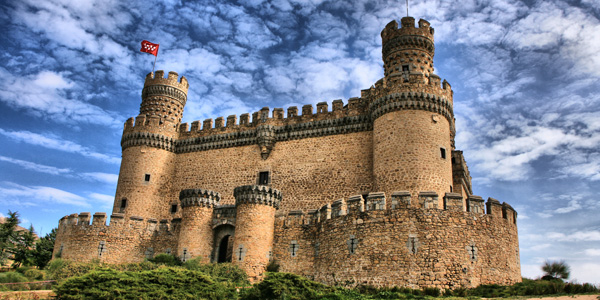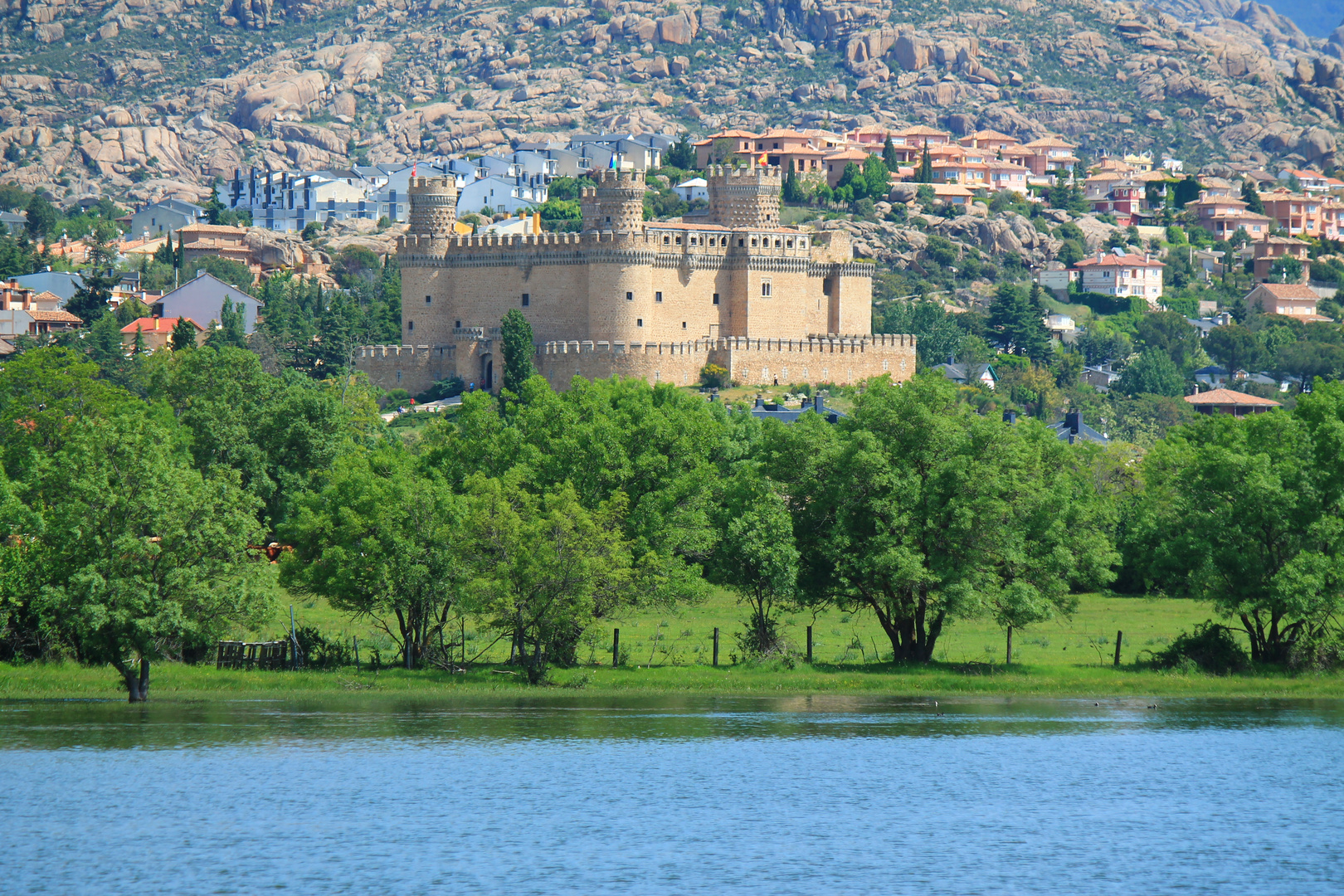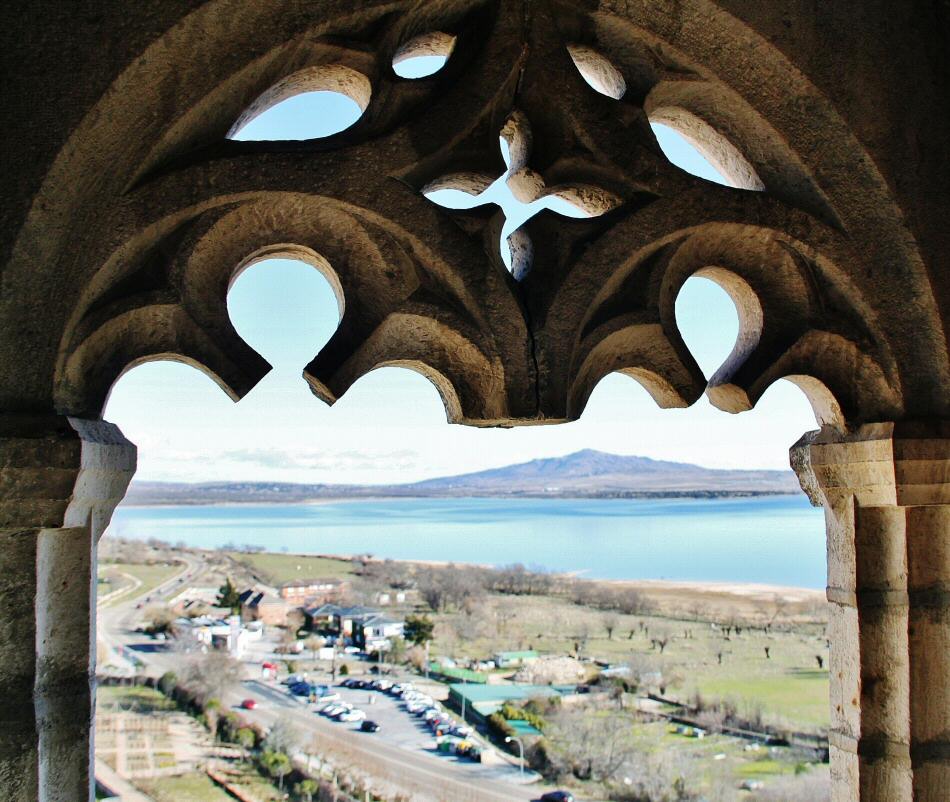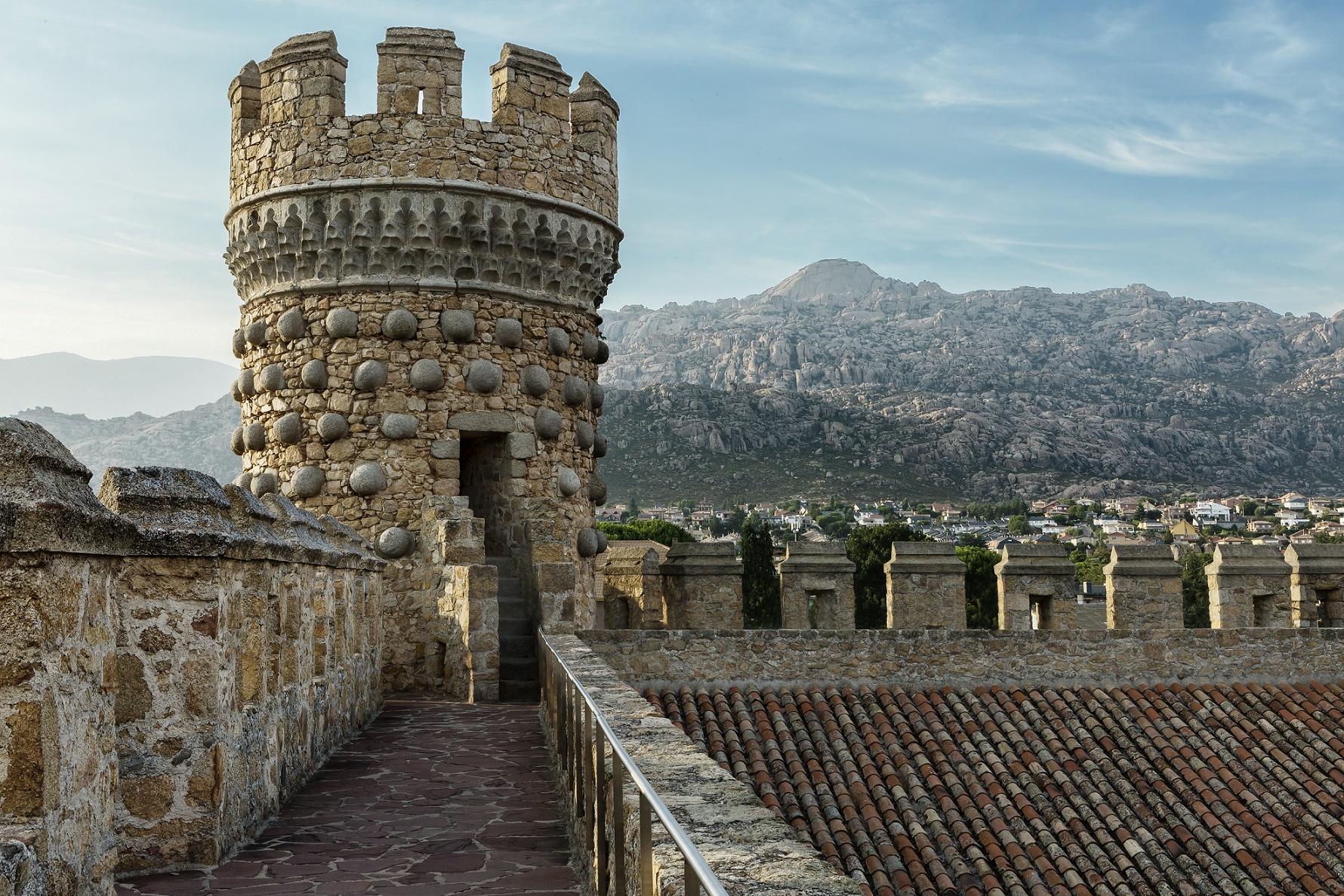
The town of Manzanares el Real, 30 miles north of Madrid, is most famous for its castle, which is an imposing example of the Castilian military architecture of the 15th century and one of the last of its kind in Spain. In fact, after initially being user as a fortress, it became a residential Palace of one of the noblest families in Castilla since the Middle Ages: the Mendozas. However, Manzanares Castle is also closely tied in with Madrid's recent history, because the process leading to the autonomy of Comunidad de Madrid (1981) was started there, as was the project for the Statute of Autonomy, which would be approved in Congress and the Senate in 1983.


The construction of the castle began in the year 1475, at a time when Madrid was just a little town. The castle has a quadrangular plant with four towers on the corners. The whole building is surrounded by a permiter barbican, with a single entrance via a beautiful west-facing door, flanked by two strong turrets and defended by stone deer. All the walls of the barbican contain loopholes in the shape of the Jerusalem Cross in homage to the first duke's brother, Cardenal Mendoza, who was given the title of Cardinal of the Holy Cross of Jerusalem Basilica by the Catholic Monarchs in 1480.

The south facade boasts a portico, the outer face of which is made up of low arches with a flamboyant Gothic style pillar between each one. It contrasts sharply with the solid walls and shows how lnigo Lopez changed the look of his residence with the help of the skilled architect Juan Guas. The latter also designed the magnificent portico, galleries around the central courtyard, with late Gothic and Mudejar influences particularly on the ceilings and the corridors containing the coat of arms of the Mendozas, Lunas and Enriquez. The Castle’s stately appearance, contrasting with the harmonious blend of Moorish and Renaissance details and the elegance of the mock Arabic cornice on which the battlements are supported, is only interrupted on the south-facing facade by the splendid portico which gives it a special grace and uniqueness.

 10.52.36.png) The Mendozas used this Palace-Castle as a stately home for less than a century. In 1565 when the 4th Duque del Infantado died, feuds between the inheritors resulted in its disuse and a slow process of deterioration until the architect, Vicente Lamperez Romera, took responsibility for the first restoration works in 1914. Declared a Historical Art Monument in 1931, the Duque del Infantado, lnigo Arteaga y Folquera, ceded it to Madrid County Council in 1965. At present, the Castle is run by “Direccion General de Turismo de la Consejeria de Economia y Empleo de la Comunidad de Madrid”.
The Mendozas used this Palace-Castle as a stately home for less than a century. In 1565 when the 4th Duque del Infantado died, feuds between the inheritors resulted in its disuse and a slow process of deterioration until the architect, Vicente Lamperez Romera, took responsibility for the first restoration works in 1914. Declared a Historical Art Monument in 1931, the Duque del Infantado, lnigo Arteaga y Folquera, ceded it to Madrid County Council in 1965. At present, the Castle is run by “Direccion General de Turismo de la Consejeria de Economia y Empleo de la Comunidad de Madrid”.
The castle of Manzanares also appears in the movie "El Cid" (1961) featuring Charlton Heston and Sophia Loren. If you ever get a chance to pass by Manzanares El Real, I highly recommend visiting this wonderful property.